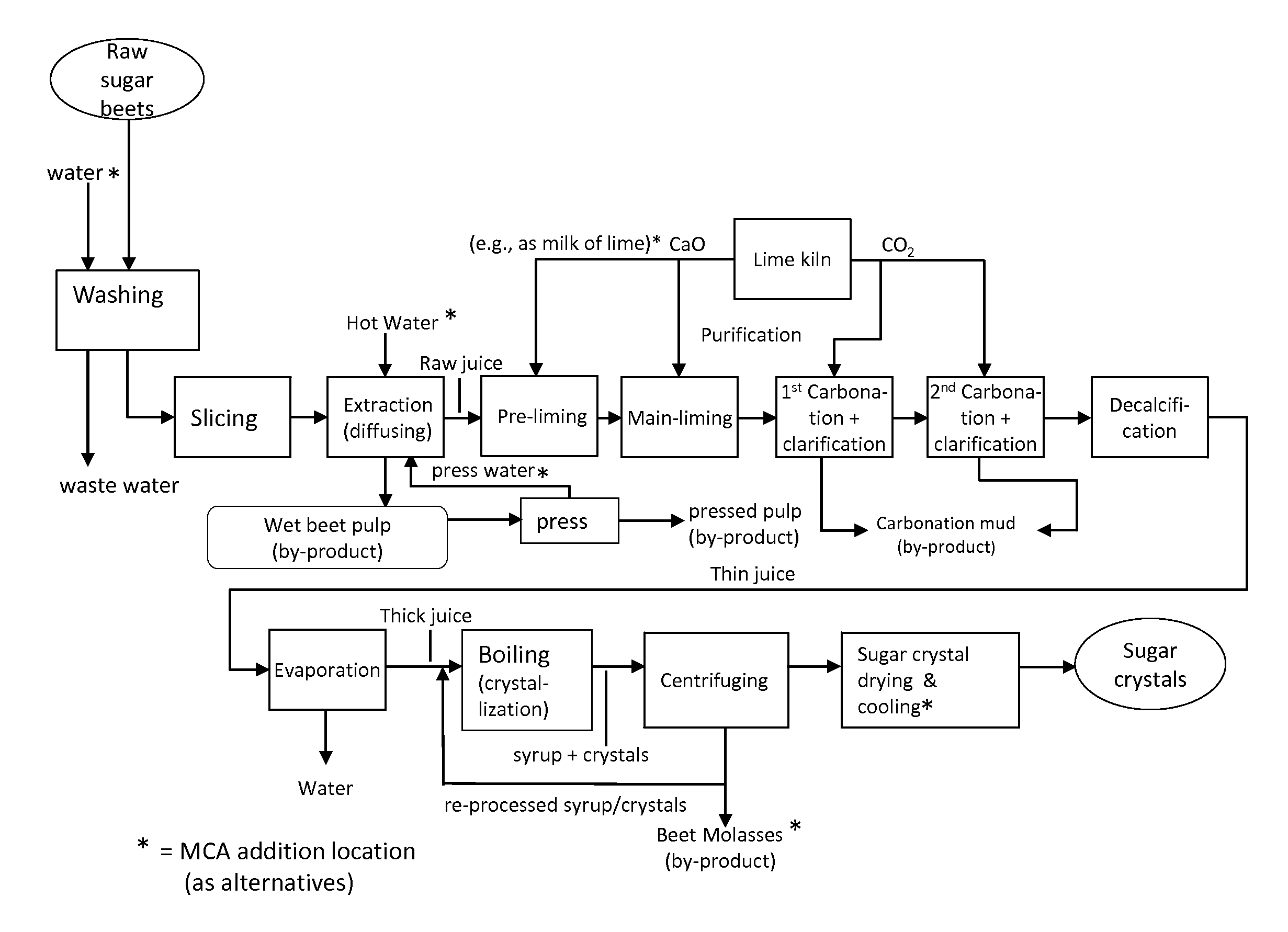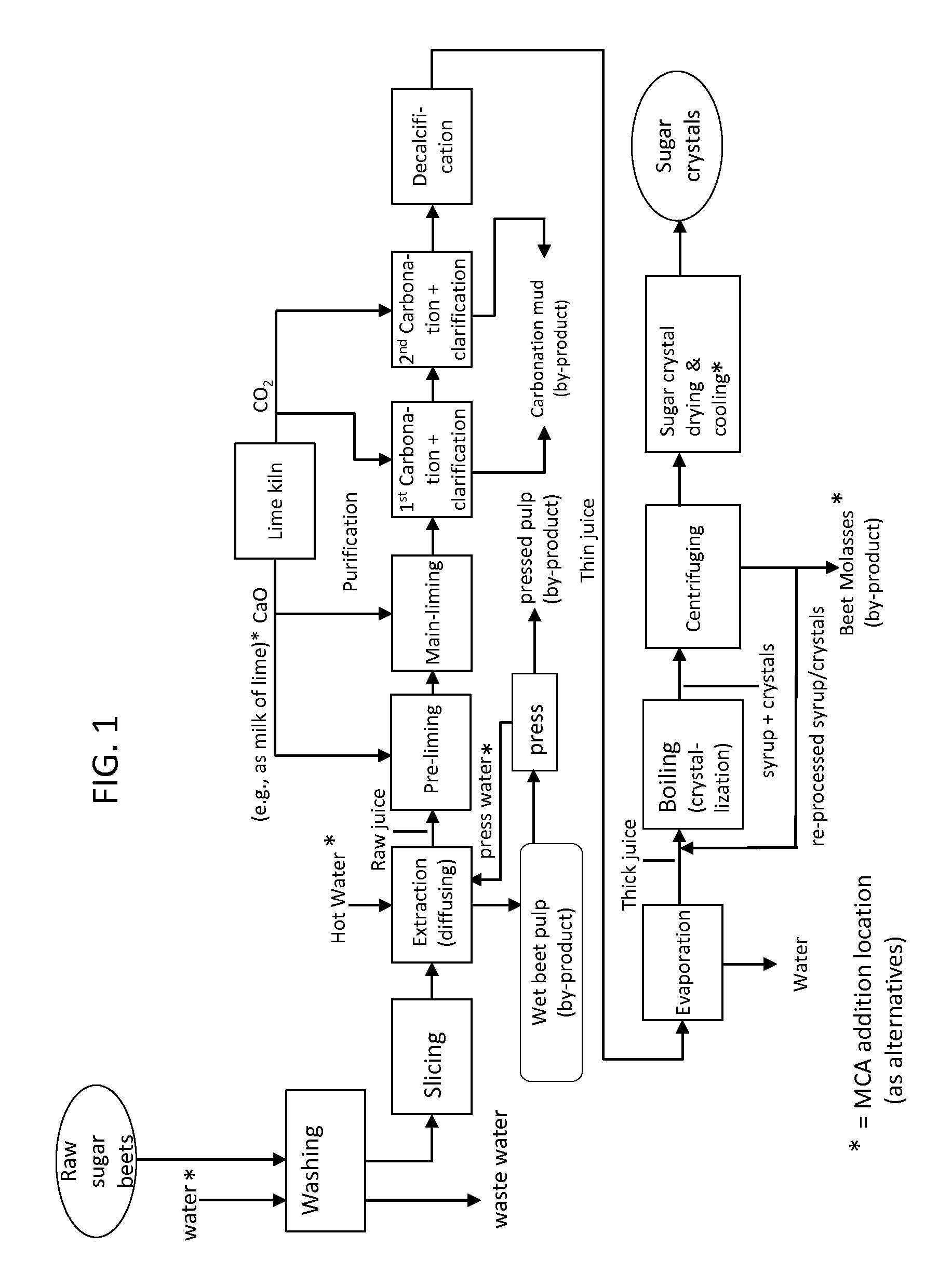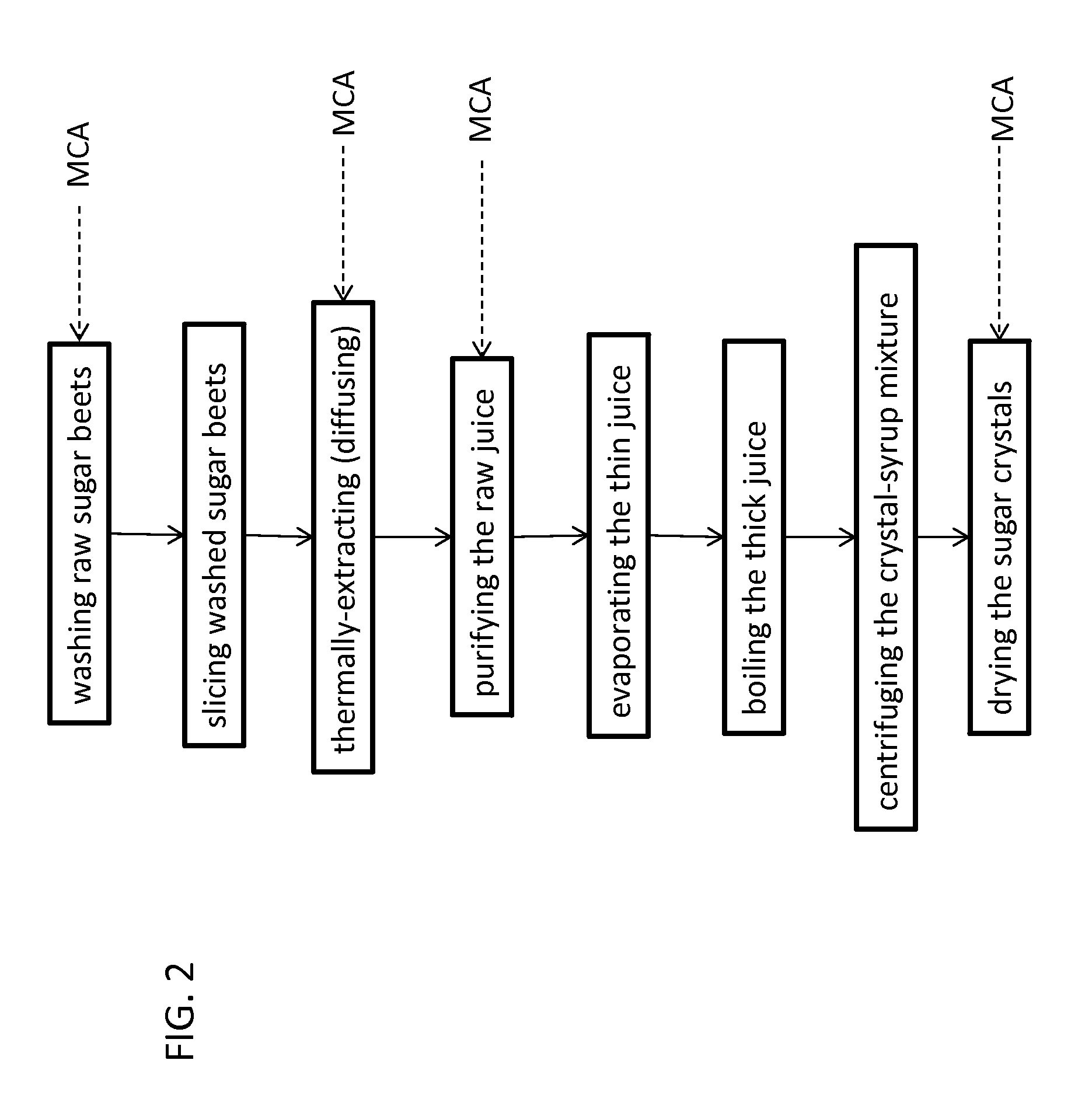Methods of microbiological control in beet sugar and other sugar-containing plant material processing
a technology which is applied in the field of microorganism control in the production of beet sugar and other sugar-containing plant materials, can solve the problems of high risk of microorganism infestation in food-technological processes, loss of sugar products, and elevated bacterial populations in products, so as to reduce the loss of sugar
- Summary
- Abstract
- Description
- Claims
- Application Information
AI Technical Summary
Benefits of technology
Problems solved by technology
Method used
Image
Examples
Embodiment Construction
[0018]In accordance with the present invention, a method is provided to preserve sugar by controlling microbiological sugar consumption during processing of sugar from sugar-containing plant material. The present invention also relates to a method to control microorganisms during sugar recovery operations from plant material. The term “plant” is used herein botanically unless indicated otherwise.
[0019]A key point in achieving effective control of the problems detailed above is using a monochloramine treatment, which can control bacterial sugar consumption in the processing of sugar-containing plant materials, such as sugar beets, without causing adverse effect on the brightness of the white sugar crystal product or other sugar product properties. Infection control can be provided through the monochloramine to reduce or eliminate the presence of sugar-consuming microorganisms, such as sugar-consuming bacteria. In addition to or alternatively to providing control of sugar losses, the ...
PUM
| Property | Measurement | Unit |
|---|---|---|
| temperatures | aaaaa | aaaaa |
| temperatures | aaaaa | aaaaa |
| of time | aaaaa | aaaaa |
Abstract
Description
Claims
Application Information
 Login to View More
Login to View More - R&D
- Intellectual Property
- Life Sciences
- Materials
- Tech Scout
- Unparalleled Data Quality
- Higher Quality Content
- 60% Fewer Hallucinations
Browse by: Latest US Patents, China's latest patents, Technical Efficacy Thesaurus, Application Domain, Technology Topic, Popular Technical Reports.
© 2025 PatSnap. All rights reserved.Legal|Privacy policy|Modern Slavery Act Transparency Statement|Sitemap|About US| Contact US: help@patsnap.com



